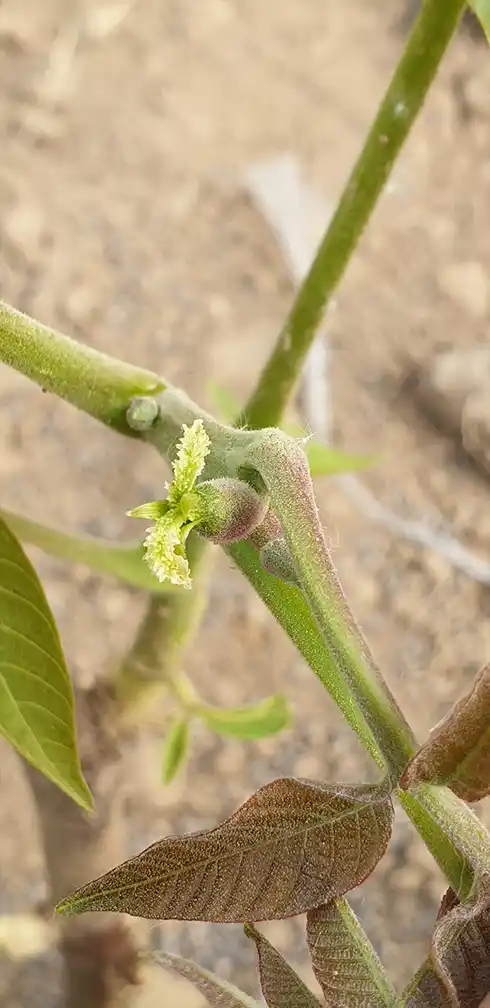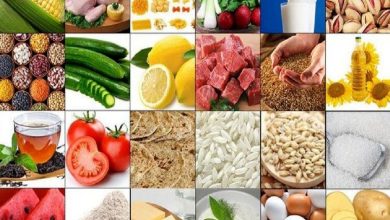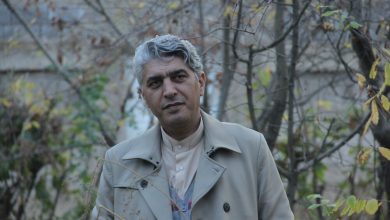Trees resistant to hot and dry climates
Drought and drought tolerant trees are formed in climatic conditions adjacent to the desert and at a low altitude from sea level. In this type of climate, the humidity is always low and the annual precipitation is very low. To plant trees or create a green space, in addition to choosing the right plant for planting, you must pay attention to the type of placement of trees in order to cool the air and reduce the amount of soil evaporation.
In this type of climate, the cultivation of plants is associated with water and fertilizer restrictions, so it is recommended to plant in an enclosed space first, or with the help of some trees, this space should be provided for cultivation. Planting trees such as pine and cypress or planting shrubs and creeping plants are suitable for this. Creeping and climbing plants are valuable plants for landscaping in hot, dry climates because they create landscapes suitable for green spaces.
In this type of climate, it is best to use plants compatible with this climate. Plants adapted to these conditions benefited from special features, for example, the leaves of the plant in question are mottled, or the leaves of the sage plant are gray to reduce the evapotranspiration of the plant. Or, for example, in the yucca plant, the presence of blades on the plant reduced evapotranspiration. Potted pine or cedar with low watering are suitable for these areas, while the Christmas tree needs moist conditions and plenty of water.
It is much more interesting to grow thorny oaks, tulips, and lilacs at home than aspen, silver maple, birch, or eastern spruce. The right place to plant a tree in a green space for this climate is turf-free ground, unless the lawn needs very little watering. Before planting, it is best to pay attention to the type of soil, drainage, etc., because they have a great influence on the growth of plants and trees. Among the drought-tolerant plants and seedlings, we can mention plants such as Pentas, Shah Pansad, Khatmi, Purslane, Salt Glass, Monkey Flower, Parsley Flower, Candlestick, Akhtar, Atlasi, etc.

Eucalyptus tree
It is a suitable tree and one of the heat-tolerant plants for creating a windbreak, covering the soil surface and controlling soil erosion. A lush and fast-growing tree.
There are three types of eucalyptus: desert, lemon and blue
Desert eucalyptus is a fast-growing windbreak and canopy. It grows well in humid climates. It grows rapidly in coastal areas, but is resistant to desert conditions. Lemon eucalyptus grows well as it does in the desert and is used a lot by landscapers, but it is cold sensitive and is mostly grown in coastal areas.
Evergreen oak tree
This tree grows a lot and is used for soil and canopy erosion control. Oak is a large tree and grows well, so it should be planted in wide areas.
acacia tree
This tree is suitable to be kept in guest houses and used in urban green spaces due to the beauty of its leaves and branches. In the first years of cultivation, it needs maintenance and must be pruned to obtain the desired shape and fit the green space.
Ashkenbil bush
It is in the form of a shrub and has a high endurance and adaptability in sandy fields and deserts. It is resistant to salinity and lack of water, the growth of the roots of this shrub is very high, and in addition to controlling soil erosion, it is highly resistant to severe storms.
mesquite tree
It grows mostly in moist areas with high groundwater levels and is the main tree of forests in subtropical regions. The roots of this tree increase soil quality and crop growth by fixing soil nitrogen, and are used as a green belt and windbreak.
Bitter olive tree
This tree grows well in most tropical and temperate regions. It is adaptable to environmental conditions and has low projections, and is widely used as a canopy in streets and parks due to its branch canopies.
Nettle tree
This shrub grows well in the steppe and desert areas with saline soils, has a deep taproot, is water-loving and is used to control soil erosion and desertification.
the tree next to it
This tree is drought and drought tolerant, and with the help of its deep roots it can obtain the moisture it needs in drought and drought conditions. It is also resistant to pollution and it has been observed that after a fire breaks out, this tree begins to grow after a few months. Sandy soil with adequate drainage and a neutral pH is a suitable place for this tree to grow.
Almond tree (Karm Zangi tree)
The Garum Zangi or cashew tree is a heat-tolerant plant and is one of the most popular trees that grows well in hot, dry climates. This tree is grown in the south of the country and in Sistan and Hormuzgan, although this plant is grown in abundance in India and neighboring countries.
Port Guava Olive Tree
Guava is a plant that does not need much fertilizer and water, which is why it is mostly grown and cultivated in dry and semi-arid regions.
Drought-tolerant palm tree
The main feature of the palm tree compared to other trees and plants is its resistance to environmental stress and soil moisture. But 2 cubic meters of water is enough to grow every kilo of dates. The best yield is obtained in sweet soils with proper irrigation.
Tropical liana
Large and perennial vines are very tolerant of lack of water, but in the early stages of growth, they urgently need water and proper irrigation because their roots are not established and they do not grow well. It does not grow well in hot, dry conditions and does not bear fruit. This tree grows well in clay soil and it is best to water more often when there is a lot of wind.
Tropical fig tree
This tree is a heat-tolerant plant whose leaves turn yellow and fall off in the fall. This tree is suitable for subtropical regions with mild winters, moderate rainfall, and hot summers. The resistance of this tall tree to adverse environmental conditions, especially against soil salinity, has made it adaptable to different weather conditions, and many farmers are trying to cultivate it. This tree lives up to three hundred years and reaches fifteen meters in height. The fig tree is grown in the cities of Esteban and Nerez in the dry season in the mountainous regions.
jujube tree
Drought and drought resistant jujube shrub with a height of seven to ten meters with hard and large wood is one of the most enduring trees and grows in most regions of Iran. It grows against lack of water and poor soil quality and is not damaged by drought and frost. This tree does not grow on limestone and chalk soils and bears little fruit. Jujube roots need oxygen and grow well in sandy, loamy soil.
Barberry tree
The barberry tree is very drought tolerant, but the right amount of watering has a great effect on harvesting large and juicy fruits. The irrigation period is done once for ten days. Seedless barberry has lower water requirements than other barberry genera and species and, for this reason, is considered by growers.
In years of water shortage and drought, the farmers had a good harvest even by irrigating three times. The lack of sufficient water for the plant does not cause the plant to die and has good resistance.
pistachio tree
The pistachio tree is very drought and salinity tolerant and grows well in harsh desert conditions. This plant is very economical for farmers and can be cultivated and developed in desert and dry areas.
Cactuses
Aloe vera plant is a type of cactus that has attracted the attention of Iranians for several years. This plant is very resistant to bad environmental conditions, and its cultivation is very easy, and most farmers have started cultivating it.
banana tree
Banana is a very tall and vigorous shrub, its fruit is green and turns yellow after ripening. It grows well in subtropical and tropical regions and is cultivated in southern Sistan and Baluchestan. Also, banana plantations have attracted the attention of many tourists.
mango tree
This tree is very popular in the tropics, and is considered a heat-tolerant plant. The production of juice and food seasoning is widely used. Mangoes contain a lot of fiber and are also rich in antioxidants. They reach ten meters in height and are often grown in India and Malaysia. This tree grows in very hot and humid conditions and has many fans.
damn tree
The brick tree or the wild pistachio tree is special for hot and dry regions, and its fruits have many nutritional and therapeutic properties. The gum of this plant also has great commercial value and is sold for various purposes. This is a car manufacturer and has a high resistance.
Indian cedar tree
This tree grows well and its roots are very strong. It is very resistant to adverse weather conditions and can withstand temperatures up to fifty degrees Celsius. The fruits of this tree contain large amounts of vitamin C and the leaves are edible and can be used by livestock.
Elo yellow tree
The yellow aloe vera tree is very sun-loving, but it needs a lot of water. Its flowers are sensitive to cold, so it is best cushioned in the tropics and will bear fruit faster. This tree reaches five meters in height. And in order to sweeten the fruit and make it juicy, it must be watered often, especially during the growing season.
blueberry:
One of the most attractive plants for cold and temperate regions is the blueberry plant, which can be one of the best choices with its beautiful flowers and distinctive fruits, as well as the visual beauty it brings you. These beautiful seedlings can be kept in shade in warmer regions, and even flat-types, which require less cold, are available on site.
maintenance:
The suitable temperature for the growth of mulberry seedlings ranges from 22 to 29 degrees Celsius, and during the winter it needs about 150-600 hours of temperatures below 7 degrees so that its cold needs are met and it can flower next year. Blueberry needs acidic soil to grow and should be kept in acidic or forest soil. Acidic soils include sphagnum moss or rotted leaf soil.
You can easily order on the website. Raspberries, Goji berries, Logan berries, and Rani berries can all be grown under almost the same conditions as blueberries.
an Apple:
Apples are trees that have good resistance in cold regions. Apples are considered trees in cool temperate regions and can withstand cold from -35-40°C. The apple’s cold requirement is about 1000-1600 hours below 7°C and does well in areas with warm winters. Did not come. In the last two months of ripening these fruits, cool nights are appropriate, otherwise the fruits will have a dull color and loose consistency, and the desired taste will not be achieved.
We have two types of apples: early ripening and late ripening apples
Early Ripening Apple Varieties: These varieties are produced around Khordad and Tere and can be grown easily in most cold regions, such as Kandak Kashan gulab, Isfahan gulab, Ahar summer apple, Shafiabadi apple.
Iranian autumn apples such as Derian apple, Marand apple, etc. We also have all kinds of apple trees available on site, which include, and…
Cherry:
Cherries, like apples, belong to the lily family and are suitable for cultivation in regions with mild winters and dry summers. Planting cherries in damp and dirty areas increases the possibility of diseases such as canker disease.
The cold resistance of cherry blossoms is higher than that of peach and lower than that of pears and peaches. The cooling requirement for most cherry trees is 1,000 to 1,500 hours. Among the cherry seedlings available on the site, we can mention
Decent job:
This tree loves cold winters and hot, dry summers. The cooling requirement for this tree is between 500 and 1800 hours of temperature below 7 degrees. Conditions for peaches and green tomatoes are similar and they are considered cool-season seedlings.
walnut:
An altitude of 700 to 2500 meters above sea level is the best altitude for walnut cultivation. The extreme cold of the first season causes the brain to remain young. The chill requirement for this tree is 600 to 800 hours. The temperature over 37 degrees when the fruits are ripe also causes burns and blackening of the brain.
It is best not to plant walnuts in clay soil. Because it causes flowers, fruits and leaves to fall. It is one of the cold-resistant, late-flowering varieties of walnut.
to:
It is one of the late flowering seedlings in cooler climates in the spring to May season. Roots need a lot of oxygen. Therefore, it is better to grow it in a soil with a high percentage of sand. Because of the sensitivity to anthrax, it should be grown in regions where summers are relatively dry, such as Isfahan and Kashan.
To buy fruit seedlings at a reasonable price and excellent quality, you only need to contact the experts of the Alpha Nahal nursery.










